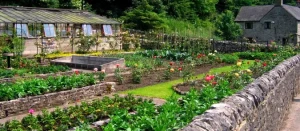SEARCH RESULTS > ARTICLES > Requirements
The no-dig method, also known as no-till gardening, is a sustainable and organic approach to cultivating vegetables without disturbing the soil structure. This gardening technique has gained popularity among gardeners due to its numerous benefits for soil health, plant growth, and overall garden productivity. Unlike traditional gardening methods that involve tilling, digging, and turning the soil, the no-dig method emphasizes minimal soil disturbance. Instead of breaking up the soil, gardeners layer organic materials on top of the ground to create nutrient-rich soil beds where plants can thrive. By implementing the no-dig method, gardeners can improve soil structure, enhance soil fertility, and promote beneficial soil organisms such as earthworms and microorganisms. Additionally, this approach helps to conserve water, reduce weed growth, and minimize soil erosion. Learn More
If the chill of winter begins to wane and the first signs of spring emerge, gardeners eagerly anticipate the opportunity to revitalize their garden beds. Transitioning from winter to spring requires careful attention to cleaning and preparing garden beds to ensure a successful growing season ahead. Learn More
Planting a tree is a rewarding and beneficial activity for both the environment and your landscape. However, it's crucial to follow the right steps to ensure the tree establishes itself and thrives. In this guide, we will walk you through the essential steps to plant a tree the right way, from selecting the right species to post-planting care. Learn More
For gardening enthusiasts, a garden is more than just a collection of plants; it's a living, breathing extension of your home. Cultivating a relationship with your garden goes beyond the routine tasks of watering and weeding. It involves understanding the needs of your plants, appreciating the changing seasons, and creating a harmonious space where both you and your plants can thrive. Learn More
Creating a thriving and productive garden involves more than just selecting the right plants and providing adequate water and sunlight. One often-overlooked strategy that can significantly enhance your garden's health and yield is companion planting. This ancient practice involves strategically planting different crops together to maximize their benefits and minimize potential issues. Learn More
In the realm of sustainable gardening, permaculture stands out as a holistic and eco-friendly approach that harmonizes with nature rather than imposing on it. Creating a permaculture garden involves thoughtful planning, observation, and a commitment to working with the natural environment. In this step-by-step guide, we'll explore how to design a permaculture garden that not only yields bountiful harvests but also nurtures the ecosystem. Learn More
Hedging plants are a great addition to any garden, providing privacy, security, and aesthetic appeal. If you're a beginner, you'll want to start with hedge plants that are relatively easy to care for and maintain. Here are some excellent options for beginners. Learn More
Crop rotation is a beneficial practice in gardening for several reasons. Learn More







